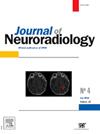Pruritus and anxiety symptoms in chronic spontaneous urticaria are associated with altered functional connectivity of the brain
IF 3.3
3区 医学
Q2 CLINICAL NEUROLOGY
引用次数: 0
Abstract
Background
Previous studies have found differences in spontaneous neural activity in multiple brain regions in CSU patients, such as the inferior orbitofrontal cortex. However, the current research on CSU patients is still dominated by brain region response, and there is a lack of evidence for the correlation between different brain regions. To elucidate the underlying mechanisms of interactions between different brain regions in CSU patients, we compared changes in FC between CSU patients and HCs.
Methods
53 patients with CSU and 31 HCs were recruited. The UAS7, VAS-P, DLQI, HAMA, and HAMD were collected to evaluate the changes in clinical symptoms in CSU. ORBinf-L was used as the seed point for whole brain FC analysis. Seed-based FC analysis was used to assess functional changes in the brain regions of the subjects.
Results
Compared with HCs, the FC values of the Caudate-L was increased in CSU patients, and the FC values was positively correlated with the VAS-P. CSU patients had decreased FC values in the Hippocampus-R, and were negatively correlated with the values of HAMA.
Conclusions
Our results revealed that CSU patients demonstrate aberrant connectivity in specific brain circuits—particularly the ORBinf-L to Caudate-L and ORBinf-L to Hippocampal-R pathways, which correlates with their pruritus severity and anxiety levels.
Trial registration number
ChiCTR2200064563
慢性自发性荨麻疹的瘙痒和焦虑症状与大脑功能连通性的改变有关。
背景:先前的研究发现,CSU患者的多个脑区自发神经活动存在差异,如下眶额叶皮质。然而,目前对CSU患者的研究仍以脑区反应为主,缺乏不同脑区之间相关性的证据。为了阐明CSU患者不同脑区之间相互作用的潜在机制,我们比较了CSU患者和健康对照(HC)之间功能连接的变化。方法:招募CSU患者53例,hc患者31例。收集UAS-7、VAS-P、DLQI、HAMA和HAMD,评估CSU患者临床症状的变化。采用基于种子的静息状态功能连通性分析来评估受试者大脑区域的功能变化。结果:与HC相比,CSU患者尾状核的FC值升高,且FC值与VAS-P呈正相关。与HC相比,CSU患者右侧海马FC值降低,与HAMA值呈负相关。结论:我们的研究结果显示,CSU患者在特定的脑回路中表现出异常的连通性,特别是左下眶额皮质(ORBinf-L)到尾状和ORBinf-L到海马通路,这与他们的瘙痒严重程度和焦虑水平有关。试验注册号:ChiCTR2200064563。
本文章由计算机程序翻译,如有差异,请以英文原文为准。
求助全文
约1分钟内获得全文
求助全文
来源期刊

Journal of Neuroradiology
医学-核医学
CiteScore
6.10
自引率
5.70%
发文量
142
审稿时长
6-12 weeks
期刊介绍:
The Journal of Neuroradiology is a peer-reviewed journal, publishing worldwide clinical and basic research in the field of diagnostic and Interventional neuroradiology, translational and molecular neuroimaging, and artificial intelligence in neuroradiology.
The Journal of Neuroradiology considers for publication articles, reviews, technical notes and letters to the editors (correspondence section), provided that the methodology and scientific content are of high quality, and that the results will have substantial clinical impact and/or physiological importance.
 求助内容:
求助内容: 应助结果提醒方式:
应助结果提醒方式:


